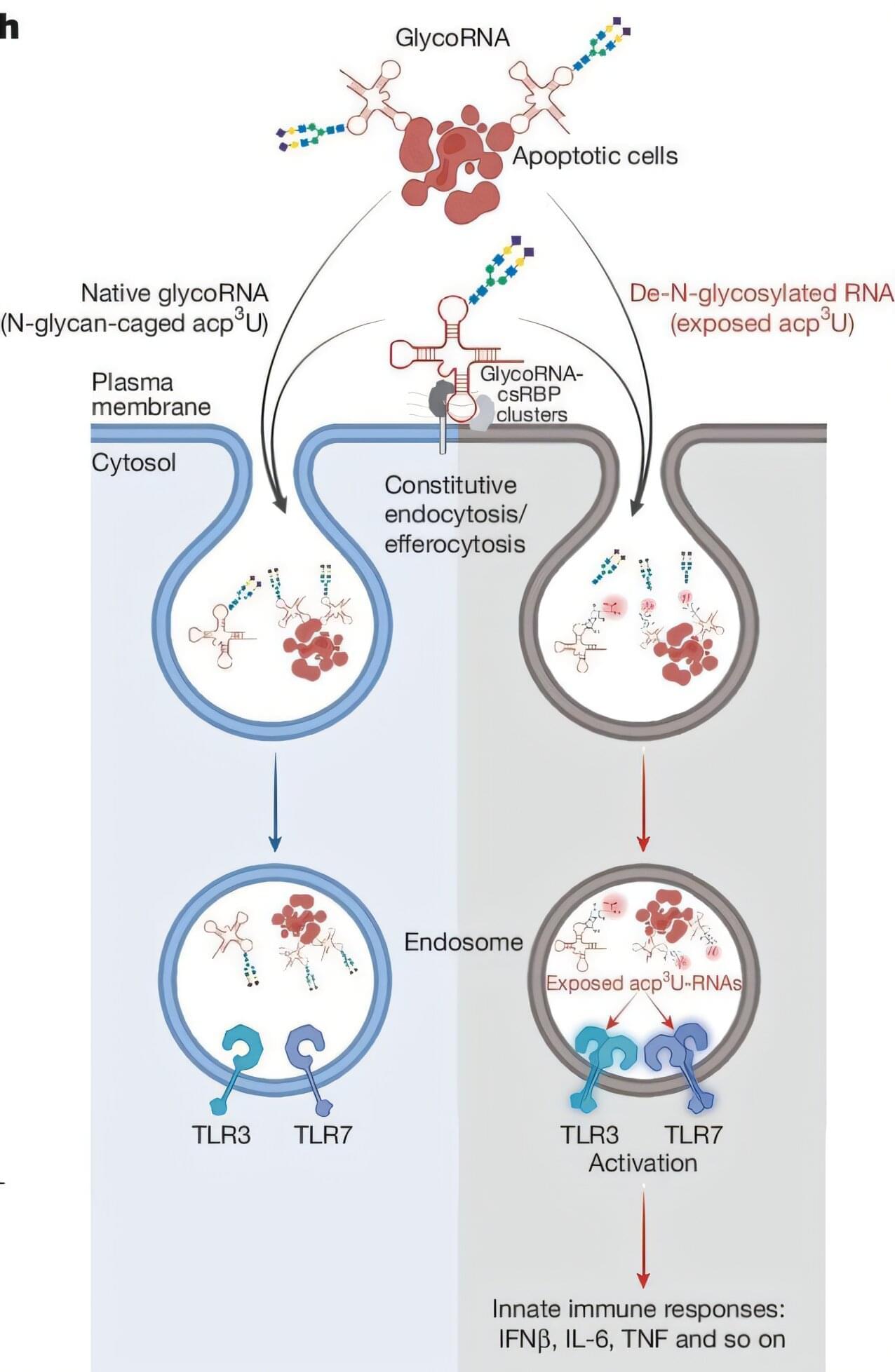To our immune system, naked RNA is a sign of a viral or bacterial invasion and must be attacked. But our own cells also have RNA. To ward off trouble, our cells clothe their RNA in sugars, Vijay Rathinam and colleagues at the UConn School of Medicine and Ryan Flynn at Boston Children’s Hospital report in Nature.
Ribonucleic acid (RNA) is a family of large biological molecules fundamental to all forms of life, including viruses, bacteria, and animals. Viruses as diverse as measles, influenza, SARS-CoV-2, and rabies all have RNA, which is why the immune system starts attacking when it sees RNA in the bloodstream or in other inappropriate locations. But our own cells have RNA as well, sometimes displaying it on their surface, plain for roaming immune cells to see—and yet the immune system ignores it.
“Recognizing RNA as a sign of infection is problematic, as every single cell in our body has RNA,” says UConn School of Medicine immunologist Vijay Rathinam. The question is, how does our immune system distinguish our own RNA from that of dangerous invaders?
